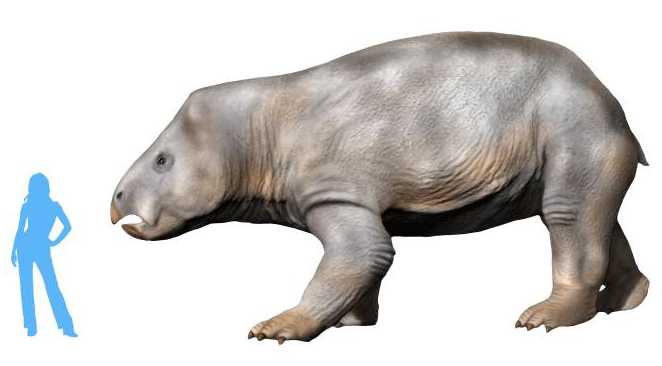
The remains of a large synapsid the size of an elephant has been discovered in Triassic rock layers in Poland, much to the surprise of researchers who thought that colossal mammal-like creatures had died out prior to the existence of dinosaurs. Christians, however, state that the find is no surprise and again points to the Great Flood.
While paleontologists claim in the journal Science that the massive rhinoceros-like beast, which has been named as the new species Lisowicia bojani, lived approximately 200 million years ago and is the product of evolution, it is noted that the discovery does raise a number of questions.
“We used to think that after the end-Permian extinction, mammals and their relatives retreated to the shadows while dinosaurs rose up and grew to huge sizes,” said Dr. Grzegorz Niedzwiedzki of Uppsala University, who co-authored the report with Tomasz Sulej and Jerzy Dzik of the Polish Academy of Sciences.
“The discovery of Lisowicia changes our ideas about the latest history of dicynodonts, mammal Triassic relatives. It also raises far more questions about what really make them and dinosaurs so large,” Sulej also stated.
Researchers had heretofore believed that mammal-like creatures of this magnitude—nearly nine feet tall and fourteen feet long, and weighing an estimated nine tons—did not co-exist with dinosaurs, but rather died out over 250 million years ago during the Permian Period. But the discovery of the bones in what were considered Triassic rock layers in the Polish village of Lisowice throws off that conclusion.
While still using “millions of years” language, according to Science Daily, paleontologists state that the discovery now dates the massive animal “10 million years later than previous findings of dicynodonts.”
Stephen Brusatte, a vertebrate paleontologist at The University of Edinburgh, told Science Magazine that he likewise had taught that dinosaurs and dicynodonts, which belong to the synapsid group, didn’t co-exist.
“That’s the story I tell my students in my lectures. But this throws a wrench into that simple tale,” he said.
“Lisowicia is hugely exciting because it blows holes in many of our classic ideas of Triassic ‘mammal-like reptiles,'” Niedzwiedzki similarly stated. “Lisowicia is the youngest dicynodont and the largest non-dinosaurian terrestrial tetrapod from the Triassic. It’s natural to want to know how dicynodonts became so large.”

However, Brian Thomas, a science researcher with the Institute for Creation Research, said the discovery of the Lisowicia bojani—while those who wrote the report on the find might not see it as such—points to the handiwork of the Creator.
“An elephant-size synapsid discovered in upper Triassic rocks from Poland comes as a fun find and welcome news to biblical creation,” he told Christian News Network. “Synapsids were neither reptiles nor mammals. They made up a separate group. Most had front legs that bowed out, but this one had straight front legs to bear its bulk.”
“The authors of the Science paper resorted to magic phrases when they wrote that ‘ecological pressures may have been driving the process’ of this unique body construction. Since when do pressures construct precision tools?” Thomas, who holds a degree in biology and biotechnology from Stephen F. Austin State University, asked.
“In contrast, the idea that God created synapsids as ‘beasts of the earth’ along with mammals and reptiles—including dinosaurs—explains this good design as an intentional act.”

Dr. Georgia Purdom, a geneticist with Answers in Genesis who holds a doctorate in molecular genetics from Ohio State University, said that the discovery is no surprise for those who believe the biblical account of the Great Flood, which buried animals quickly, creating fossils for paleontologists now to discover.
“Finding the fossil of a large mammal in the same time period as dinosaurs simply does not fit [the evolutionary] timeline,” she remarked to Christian News Network.
“The rock and fossil layers are not a record of millions of years of time, but rather were formed rapidly as a result of Noah’s catastrophic global Flood,” Purdom explained. “All land creatures (including dinosaurs and large mammals) were created on Day Six of creation week, and lived at the same time and were buried at the same time during Noah’s Flood. The Bible’s history makes perfect sense of what we observe in the fossil record.”
Thomas provided similar points.
“We don’t see large creatures becoming fossils today. That requires a uniquely violent watery catastrophe to carry enough sediment to capture and bury them,” he noted. “A world-covering Flood meets that requirement. It explains why the world is covered with all these fossils, including this giant synapsid found in a dinosaur layer.”
“[T]he discovery fits right in with the Flood model. Rather than seeing eons of evolution as one ascends the rock column, we see the order in which pre-Flood ecologies were buried, from sea floor to high ground,” Thomas continued.
He outlined that the Scriptures point to a world where animals of all kinds and sizes co-existed at the same time, but in various locations, and were swept away by great waters, fossilizing them.
“According to the Bible, dinosaurs, synapsids, birds, and mammals all lived at the same time but in different places. Rising floodwaters devastated wetlands and formed Permian and Triassic rocks and fossils in just weeks or months,” Thomas said. “The Flood model was used to predict that scientists would continue finding life forms in rock layers above and below their first locations. This synapsid discovery fulfills that prediction.”
Become a Christian News Network Supporter...


